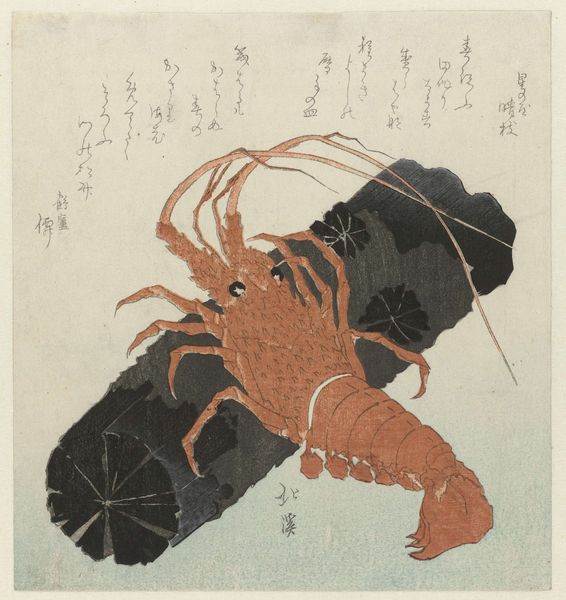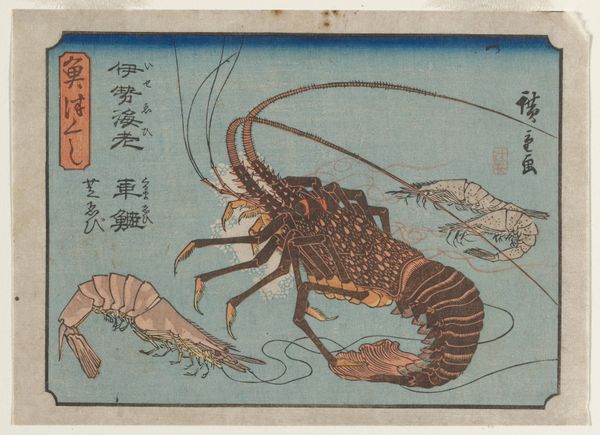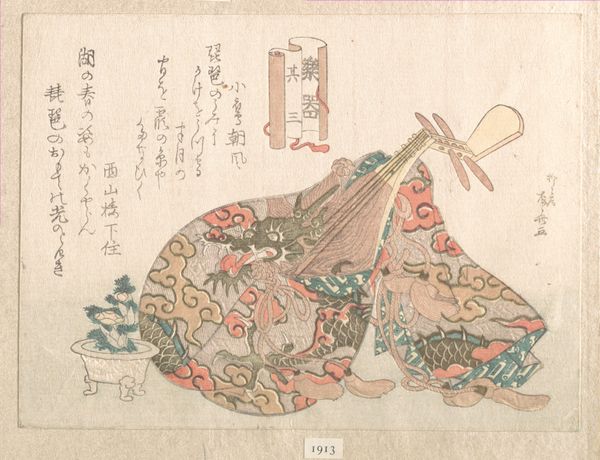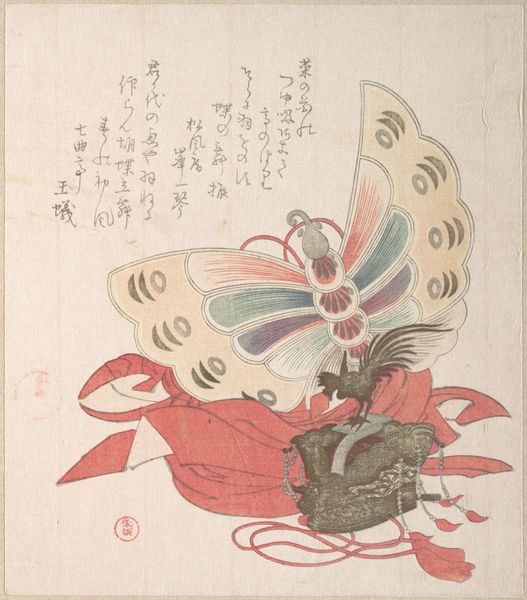
Lobster on a Piece of Charcoal with Other New Year Decorations 19th century
0:00
0:00
# print
#
asian-art
#
ukiyo-e
Dimensions: 5 x 6 13/16 in. (12.7 x 17.3 cm)
Copyright: Public Domain
Curator: This woodblock print, "Lobster on a Piece of Charcoal with Other New Year Decorations," dates from the 19th century and is attributed to Ryūryūkyo Shinsai. It resides here at the Metropolitan Museum of Art. Editor: The crimson lobster dominates. It's visually striking against the dark charcoal, demanding attention, though the paper's discolouration mutes its brilliance slightly. I wonder, what meaning did viewers then draw from its presence on this printed page? Curator: The print is a study in textures, really. Look closely at the granular quality of the charcoal juxtaposed with the glossy surface of the lobster. The process involves multiple blocks to achieve this kind of contrast. Think about the craftsperson's labor, the time taken to carve each detail…it transforms simple ingredients into complex material reality. Editor: Certainly, but that red against grey immediately calls to mind themes of fortune and longevity. Lobster, often symbolizing long life due to its long lifespan and slightly hunched form, set beside other lucky objects for a prosperous start to the year… the New Year decorations speak of a time steeped in ritual. The print suggests so much culturally. Curator: What interests me equally are the print's economic implications – ukiyo-e prints circulated widely and catered to a broad audience beyond the elite. How does mass reproduction change the understanding or valuing of traditional motifs or artisanal craft? The materiality allows a broader viewership of this culturally relevant symbolism. Editor: A fascinating point. Although mass produced and affordable, each lobster still echoes centuries of symbolic association. Consider its curved posture mimicking an elderly person... It suggests continuity, survival, especially potent during transitional moments like the new year. So affordable craft elevates these meanings. Curator: It seems that regardless of whether it is a piece made for the elite or the masses, Shinsai managed to subtly investigate consumption habits and materiality within art practices. Editor: Yes. This lobster connects deeply to broader themes – luck, the passing of time, human hopes – distilled onto an everyday object that remains surprisingly poignant.
Comments
No comments
Be the first to comment and join the conversation on the ultimate creative platform.













